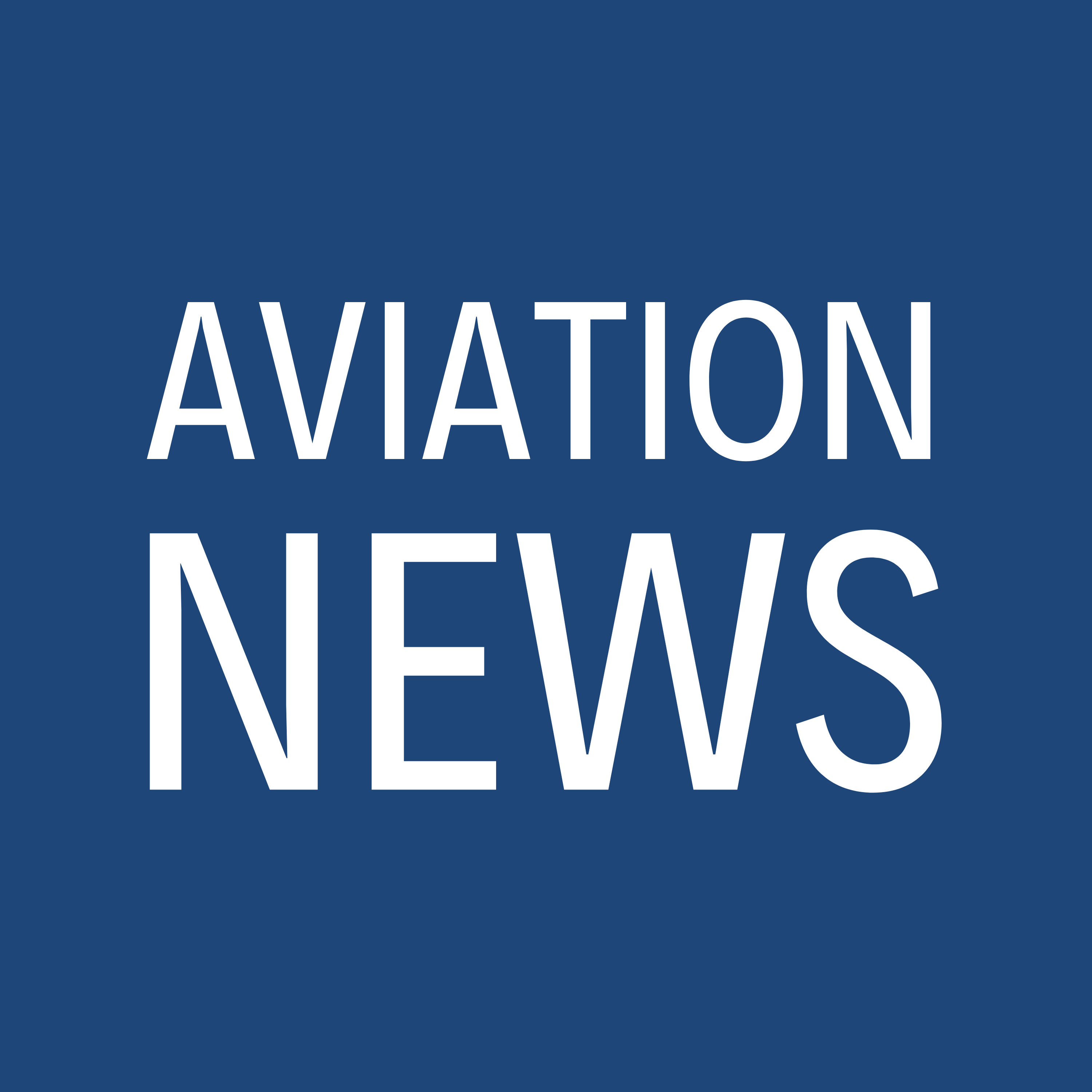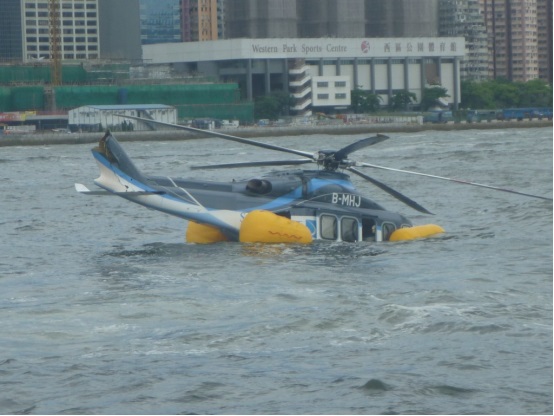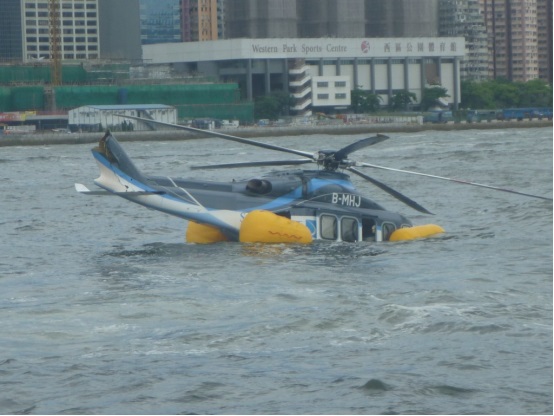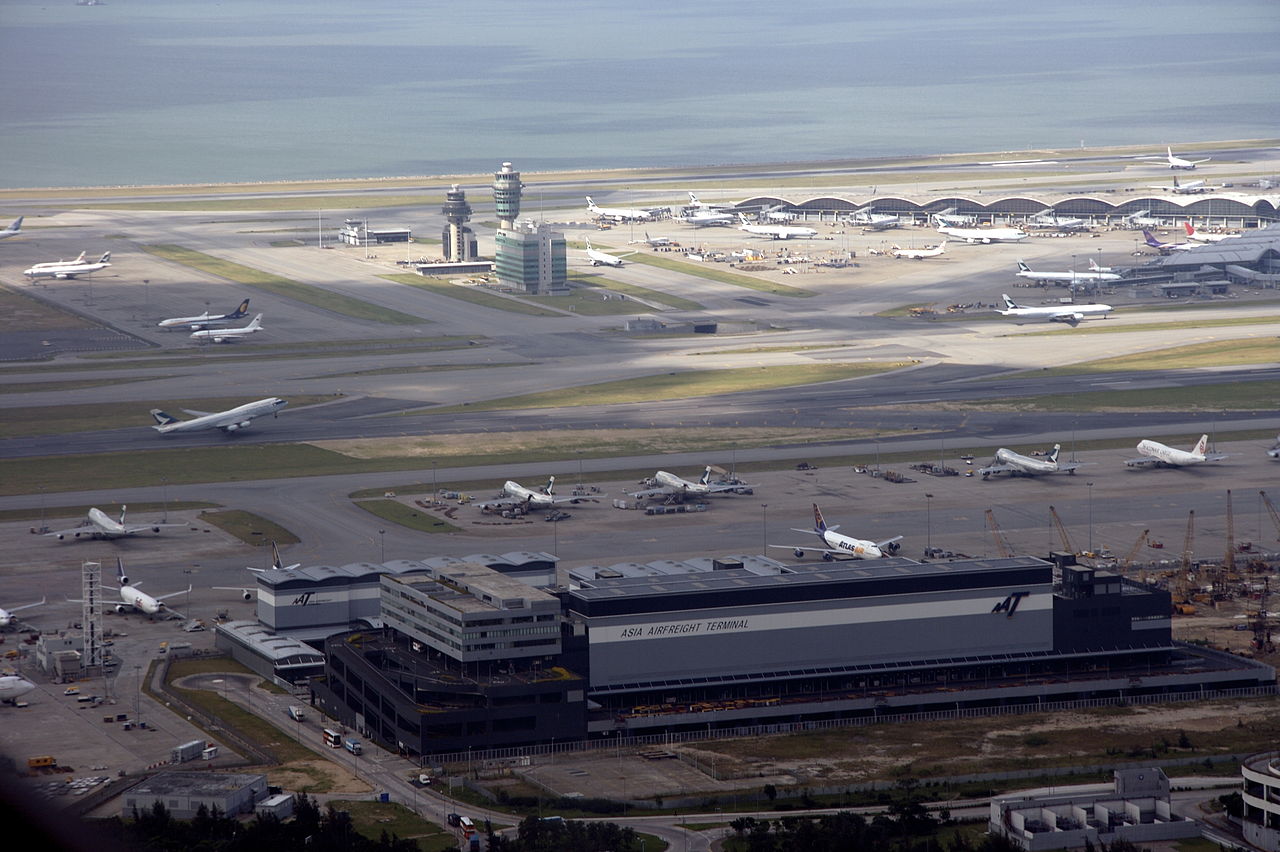Aviation News

The latest global aviation news in English.

Aviation News - Mini Lesson
Helicopter emergency ditching demonstrates importance of crew training and investigation procedures

3rd July 2010
Professional language training for aviation careers
Copyright 2025 Aviation English Asia Ltd. All rights reserved.
TRUE/FALSE
Read the headline and predict if these statements are true (T) or false (F):
- The helicopter experienced engine failure during the emergency. T/F
- The tail rotor completely separated from the aircraft. T/F
- All occupants evacuated safely from the water. T/F
- The emergency occurred at 350 feet altitude. T/F
- Manufacturing defects caused the tail rotor failure. T/F
- Similar accidents occurred in other countries. T/F
- The investigation used advanced forensic techniques. T/F
- No safety improvements resulted from the investigation. T/F
THE ARTICLE
Successful Helicopter Emergency Ditching Following Tail Rotor Failure
An Agusta Westland AW139 helicopter successfully executed an emergency ditching in Victoria Harbour after experiencing catastrophic tail rotor failure during climb. The aircraft was operating a scheduled passenger service from Hong Kong to Macao when the tail rotor assembly completely separated at 350 feet altitude.
The two-pilot crew immediately recognized the emergency when they heard a loud mechanical noise from the aircraft's rear, followed by severe vibration and complete loss of anti-torque control. The commander quickly initiated autorotation procedures while the first officer shut down both engines, demonstrating effective crew resource management.
The helicopter achieved a controlled ditching in level attitude with low forward speed. Emergency flotation bags inflated automatically upon water contact, providing buoyancy for evacuation. All eleven passengers and two crew members evacuated safely, with only three passengers sustaining minor injuries.
A comprehensive investigation by Hong Kong's Civil Aviation Department utilized advanced forensic techniques including optical microscopy and 3-D X-ray tomography. The investigation revealed significant manufacturing defects in the tail rotor blade construction, specifically porosity, delaminations, and dimensional non-compliance with design specifications.
Similar accidents occurred with AW139 helicopters in Qatar and Brazil during the investigation period, indicating systematic manufacturing problems. International cooperation between European aviation authorities and AgustaWestland resulted in comprehensive safety actions including mandatory blade inspections, revised manufacturing specifications, and improved quality control procedures.
The investigation employed sophisticated analysis methods to understand composite material failure mechanisms. Findings led to development of an improved blade design that restored original safety margins and operational reliability across the global AW139 fleet.
SYNONYM MATCH
(The words in bold are from the news article.)
- catastrophic a. serious
- executed b. carried out
- initiated c. started
- comprehensive d. complete
- forensic e. investigative
- delaminations f. layer separations
- systematic g. organized
- sophisticated h. advanced
- mechanisms i. processes
- reliability j. dependability
PHRASE MATCH
- tail rotor a. flotation bags
- emergency b. failure
- crew resource c. ditching
- emergency d. management
- manufacturing e. techniques
- forensic f. defects
- safety g. actions
- improved h. design
COMPREHENSION QUESTIONS
Answer these questions about the article:
- What type of helicopter was involved in the emergency?
- What route was the helicopter flying when the emergency occurred?
- At what altitude did the tail rotor fail?
- What emergency procedure did the commander initiate?
- How many people were on board the helicopter?
- How many passengers were injured?
- Which authority conducted the investigation?
- What manufacturing problems were identified?
- In which other countries did similar accidents occur?
- What safety improvements resulted from the investigation?
DISCUSSION – STUDENT A
Discuss these questions with your partner:
a) What do you think about the crew's response to this emergency?
b) How important is crew resource management in aviation emergencies?
c) What role do emergency flotation systems play in helicopter safety?
d) How significant are manufacturing quality control issues in aviation?
e) What can be learned from international cooperation in safety investigations?
f) How do advanced forensic techniques improve aviation safety?
g) What emergency training should helicopter pilots receive?
h) How can manufacturers prevent systematic quality problems?
DISCUSSION – STUDENT B
Discuss these questions with your partner:
a) What do you know about helicopter autorotation procedures?
b) How do tail rotor failures affect helicopter control?
c) What factors contribute to successful emergency ditching?
d) How important is rapid evacuation in water emergencies?
e) What role should certification authorities play in manufacturing oversight?
f) How can composite material failures be prevented?
g) What lessons can civilian aviation learn from this investigation? h) What questions would you ask the investigation team about their findings?
SPELLING
Correct the spelling of these words from the article:
- catastrofic tail rotor failure
- succesfully executed emergency ditching
- recogniced the emergency condition
- autorotasion procedures for helicopters
- flotasion bags inflated automatically
- comprehensiv investigation by authorities
- forenzic techniques for analysis
- manufactering defects in blade construction
- delaminations in composite materials
- sistematic manufacturing problems
- sofisticated analysis methods
- reliabilty across global fleet
SPEAKING – EMERGENCY PRIORITIES
Rank these factors in emergency management. Put the most important at the top:
• Crew resource management
• Emergency procedure training
• Aircraft system knowledge
• Passenger evacuation procedures
• Emergency equipment effectiveness
• Investigation thoroughness
• Manufacturing quality control
• International safety cooperation
ANSWERS
True/False: 1-F, 2-T, 3-T, 4-T, 5-T, 6-T, 7-T, 8-F
Synonym Match: 1-a, 2-b, 3-c, 4-d, 5-e, 6-f, 7-g, 8-h, 9-i, 10-j
Phrase Match: 1-b, 2-c, 3-d, 4-a, 5-f, 6-e, 7-g, 8-h
Comprehension Questions:
- Agusta Westland AW139
- Hong Kong to Macao
- 350 feet altitude
- Autorotation procedures
- 13 people (11 passengers, 2 crew)
- Three passengers
- Hong Kong Civil Aviation Department
- Porosity, delaminations, dimensional non-compliance
- Qatar and Brazil
- Mandatory inspections, revised specifications, improved quality control
Spelling: 1-catastrophic, 2-successfully, 3-recognized, 4-autorotation, 5-flotation, 6-comprehensive, 7-forensic, 8-manufacturing, 9-delaminations, 10-systematic, 11-sophisticated, 12-reliability

English as the Lingua Franca in Asia

The busiest international flight routes listed by OAG—such as Hong Kong to Taipei,Kuala Lumpur to Singapore, and Seoul to Tokyo Narita— are largely in Asia. These routes connect passengers, businesses, and cultures across borders, often involving pilots and air traffic controllers (ATCOs) who are not native English speakers.
- For pilots and ATCOs, clear communication in English is essential to ensuring safety during high-pressure moments like takeoffs, landings, and navigation through congested airspace. With increased air traffic comes frequency congestion, and that means that pilots and ATCOs need to get their message across faster. On top of that, misunderstandings caused by accents, non-standard phraseology, or limited vocabulary could lead to significant safety risks.
- For cabin crew, interacting with international passengers requires a strong command of English to address concerns, handle emergencies, and provide exceptional (or barely acceptable) service.
- For engineers, understanding and exchanging technical information in English with international colleagues is key to ensuring maintenance standards are met across borders.
Top 10 Busiest International Flight Routes of 2024
10. John F. Kennedy International Airport, New York (JFK)—Heathrow Airport, London (LHR): 4.01 million seats
9. Suvarnabhumi International Airport, Bangkok (BKK)—Changi Airport, Singapore (SIN): 4.03 million seats
8. Soekarno–Hatta International Airport, Jakarta (CGK)—Changi Airport, Singapore (SIN): 4.07 million seats
7. Suvarnabhumi International Airport, Bangkok (BKK)—Hong Kong International Airport (HKG): 4.2 million seats
6. Dubai International Airport (DXB)—King Khalid International Airport, Riyadh (RUH): 4.3 million seats
5. Incheon International Airport, Seoul (ICN)—Kansai International Airport, Osaka (KIX): 4.98 million seats
4. Kuala Lumpur International Airport, Kuala Lumpur (KUL)—Changi Airport, Singapore (SIN): 5.38 million seats
3. Incheon International Airport, Seoul (ICN)—Narita International Airport, Tokyo (NRT): 5.4 million seats
2. Cairo International Airport (CAI)—King Abdulaziz International Airport, Jeddah (JED): 5.47 million seats
1. Hong Kong International Airport (HKG)—Taiwan Taoyuan International Airport, Taipei (TPE): 6.8 million seats
Realities of High-Traffic Routes: The Stakes Are High
1. Hong Kong to Taipei: 6.8 Million Seats (World’s Busiest Route)
This route highlights the immense volume of short-haul international traffic in Asia. With hundreds of flights daily, pilots and ATCOs must manage crowded airspace where precision and brevity in English communication are critical. Miscommunication on this route could lead to delays, near-misses, or even accidents.
2. Cairo to Jeddah: 5.47 Million Seats
This route connects two culturally distinct regions with varying accents and communication styles. Cabin crew and ground staff must frequently assist passengers navigating the complexities of international travel. For pilots, challenges can arise in understanding air traffic controllers with strong regional accents. Proficiency in English helps bridge these gaps and ensures smooth operations.
3. Seoul to Tokyo Narita: 5.4 Million Seats
Japan and South Korea are both nations with high aviation standards, yet pilots and controllers often rely on English as a second language. Misunderstandings can arise when switching between routine radio phraseology and plain English during non-standard situations like diversions or emergencies.
Why English Proficiency Matters For The Aviation Sector
Pilots
- Busy Airspace: Routes like Bangkok to Singapore and Hong Kong to Taipei are often congested. Pilots must process fast-paced instructions from ATCOs in English. Even a slight misinterpretation, such as confusing “cleared for takeoff” with “line up and wait,” could cause accidents.
- Emergency Situations: In non-routine scenarios, pilots must use plain English to explain problems to ATCOs and coordinate responses. For example, a technical issue mid-flight requires clear articulation to avoid miscommunication.
Air Traffic Control Officers (ATCOs)
- Accent Variability: As air traffic increases, ATCOs handle pilots from diverse linguistic backgrounds. Mispronunciations or unfamiliar accents can create confusion. For instance, in crowded airspace like Singapore Changi or Dubai, controllers must issue precise, easily understood instructions to avoid conflicts.
Cabin Crew
- Passenger Communication: With leisure travel dominating many routes, cabin crew often deal with passengers who may not speak English fluently. Explaining safety instructions or addressing concerns requires clarity and confidence in English.
- Handling Emergencies: In crises, crew members must relay accurate information to passengers and coordinate with the flight deck in English, ensuring safety and calm.
Engineers
- Technical Documentation: Aviation engineers work with manuals, maintenance records, and technical documents written in English. Misinterpreting even a single instruction could lead to catastrophic failure.
- Global Collaboration: Engineers frequently collaborate with colleagues from other countries. Proficiency in technical English facilitates smooth communication during inspections, repairs, and upgrades.
Communication Challenges in a Multicultural Industry
The diversity of passengers and crew on routes such as Dubai to Riyadh or Kuala Lumpur to Singapore underscores the multicultural nature of aviation. However, this diversity comes with challenges:
- Language Barriers: Non-native speakers may struggle with pronunciation or grammar, leading to delays or errors.
- Cultural Nuances: For cabin crew, interpreting a passenger’s needs correctly is crucial, especially when English is the common but non-native language for both parties.
- Time Sensitivity: Pilots and controllers must exchange critical information quickly and clearly, especially during high-pressure situations in congested airspace.
The Need for Better English Proficiency
As travel rebounds, the aviation industry faces increasing demand for skilled professionals who can navigate these challenges. Improving English proficiency offers several key benefits:
- Enhanced Safety: Clear communication reduces the likelihood of accidents caused by misunderstandings.
- Operational Efficiency: Strong English skills minimize delays and miscommunication during routine and emergency operations.
- Global Employability: Aviation professionals with advanced English skills are more competitive in the international job market.
The data from OAG’s report paints a clear picture: the skies are busier than ever, and effective communication is critical. For pilots, ATCOs, engineers, and cabin crew, improving English proficiency isn’t just about career advancement—it’s about ensuring the safety and satisfaction of everyone onboard.
Don’t let language be a barrier to your success. Join one of our Aviation English courses today and gain the skills you need to thrive in this dynamic industry. Whether you’re handling routine operations or navigating emergencies, strong English proficiency will empower you to meet any challenge with confidence. Our courses are Asia specific and based on 15 years experience understanding the characteristics of learners in the region.
Improve your English with AVIATION ENGLISH ASIA LTD. Call us on +852 81799295 to find out how we can help you.
Learn more: https://aviationenglish.com
#aviationenglishasia #aviationenglish #hkaviation #vhhh #aviation #icaoenglish #pilot #atco #flying #piloting #airlinepilot #Pilot #見習機師 #機師英語要求 #ICAO英語 #ICAOtest #icaoenglishtest #generalaviation #flighttraining #pilottraining
For more interesting articles to help you improve your Aviation English please visit http://aviationenglish.com and LIKE our Facebook Page
"The head of a tiny Pacific airline that pioneered a fare system based on passengers’ weight said Wednesday the move had been so successful the carrier is upgrading its fleet.
Samoa Air introduced its world-first system late last year, when it began charging passengers fares based on how much they weigh, rather than a set price for each seat.
Chief executive Chris Langton said the 1.34 tala (64 cents) per kilogram charge had proved popular over the first 12 months as it meant cheaper fares for most passengers.
“People do the sums, that’s their first interest” he told the ABC.
“They compare what they would pay on a pay-by-weight system and just do basic arithmetic.”
The World Health Organisation says Samoa has one of the world’s highest rates of obesity, leading to soaring levels of weight-related coronary disease, diabetes and strokes in the Pacific island nation.
“We find that generally speaking if you look at any operation anywhere between any destination worldwide, a person who comes in at about 120 kilos or less will always be better off to travel on a pay-by-weight system,” Langton said.
He said the airline was in the process of adding to its three-aircraft fleet a new Cessna 208, which would be configured to ensure larger passengers who pay high fares are given more space.
“That way we can provide for people who are paying more because they are larger, obviously in the Pacific that is the case,” he said. “Everybody gets what they’re paying for.”
He said larger airlines were considering similar schemes.
“The interest worldwide hasn’t diminished at all. There’s massive discussion going on about how pay-by-weight can be transferred to larger airplanes,” he said.
A London design firm recently unveiled its concept for an expandable plane seat that could be widened in order to accommodate larger passengers.
Meanwhile, plane manufacturer Airbus has engaged in a war of words with rival Boeing over the width of plane seats, arguing that the airline industry should adopt a standard minimum width of 18 inches (46 centimetres).
For more interesting articles to help you improve your Aviation English please visit http://aviationenglish.com and LIKE our Facebook Page
...
- Measles warning for Qantas passengers
- Disruptive first-class passenger forces flight down
- 2 pilots killed in UPS jumbo cargo plane crash near Alabama airport
- Ryanair pilots accuse airline of ignoring safety measures
- Engine parts from Boeing 777 carrying 258 people fell 15,000ft onto Hertfordshire village striking property after mid-air fault
- Holiday yobs terrorise Ryanair flight to Ibiza
- Emergency landing as Fiji Airways engine catches fire
- China’s ‘air rage tribe’ emerges amid anger over travel delays
- Disabled man Baraka Kanaan ‘forced to crawl off Delta Airlines flight’
- Feed your pilots and cabin crew, CAAP orders airlines
Contact Us Today
Hong Kong
Aviation English Asia has been offering part time and full time courses in Hong Kong since 2009.
All courses are available in Hong Kong. Check the schedule above for details.
Vietnam
Aviation English Asia has been offering part time courses in Vietnam since 2014.
All courses are available in Vietnam - typically every 8 weeks, or by special arrangement.
Taiwan
ICAO Aviation English, English for Aircraft Maintenance Engineers, Technicians and Mechanics, and English for Flight Attendants are available in Taipei, Tainan and Kaosiung.

.jpg)